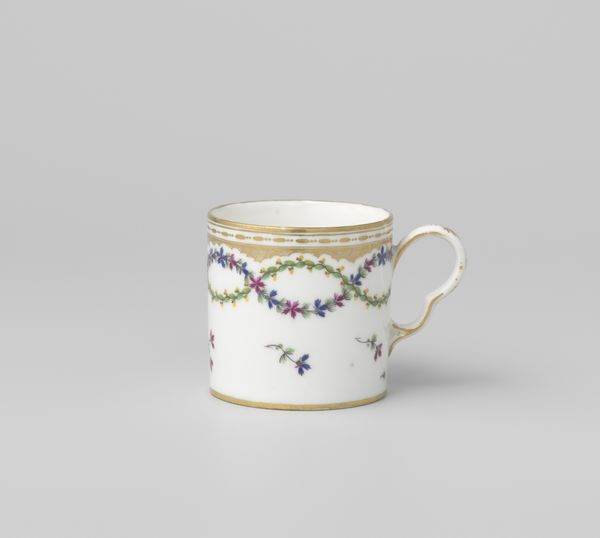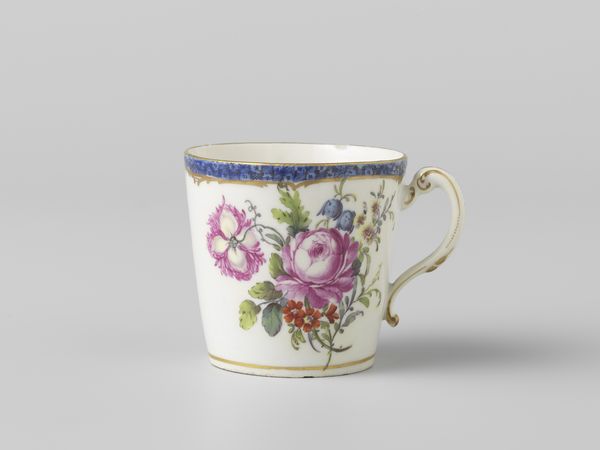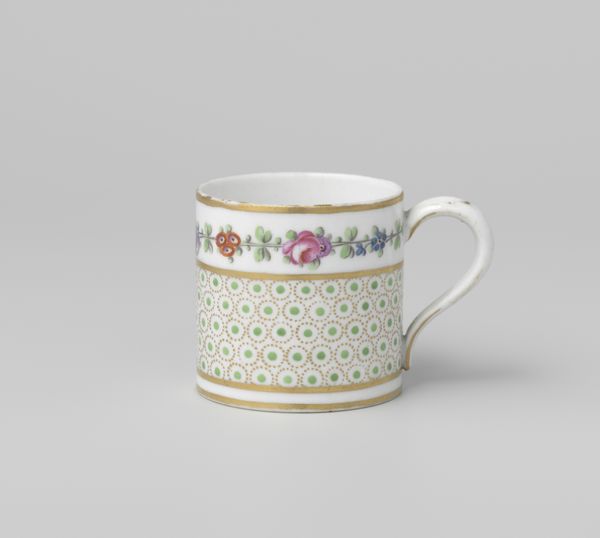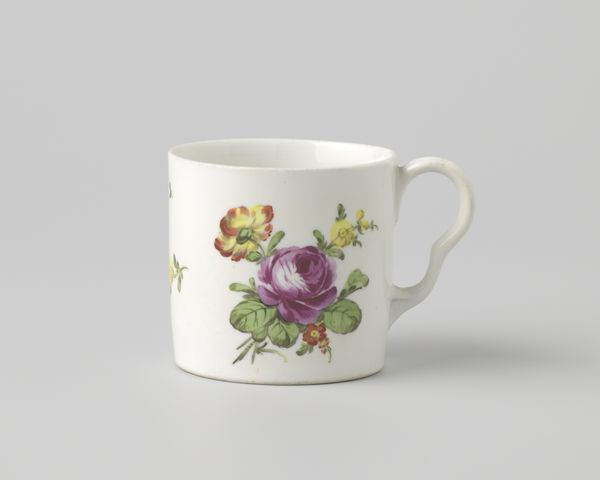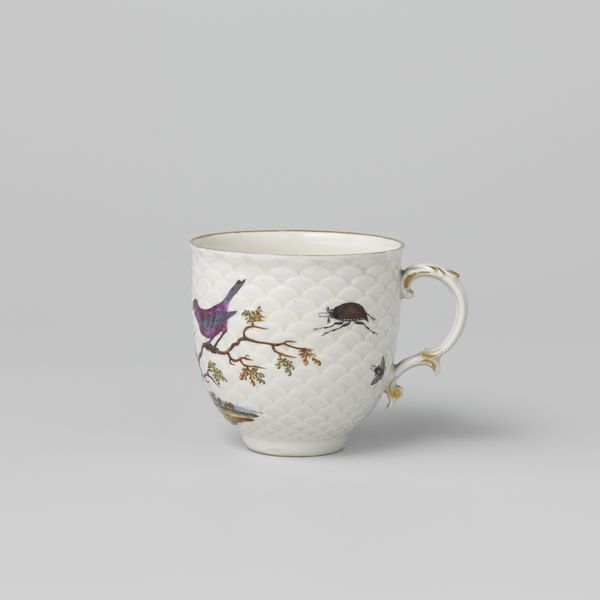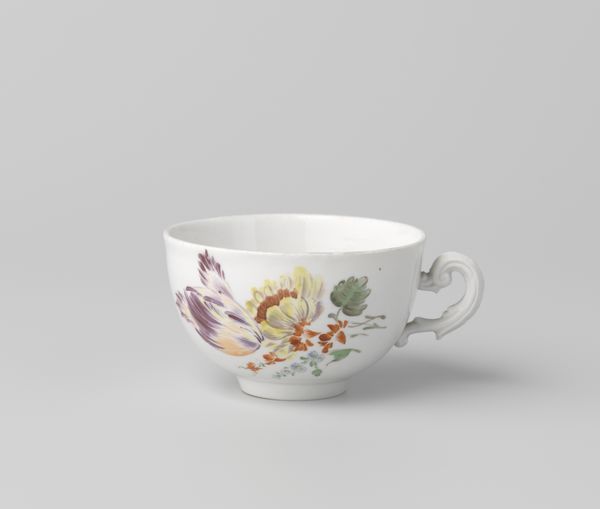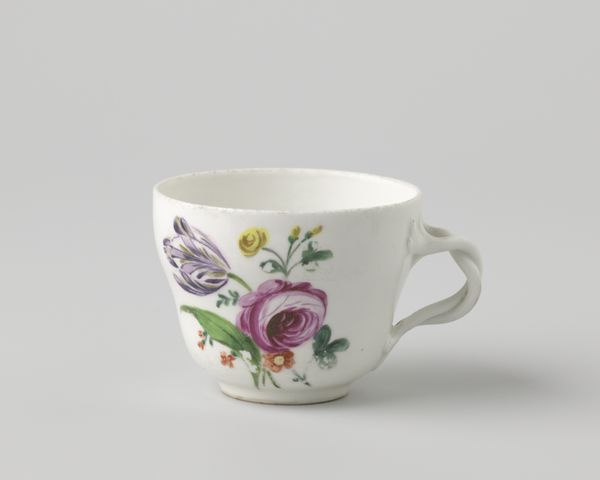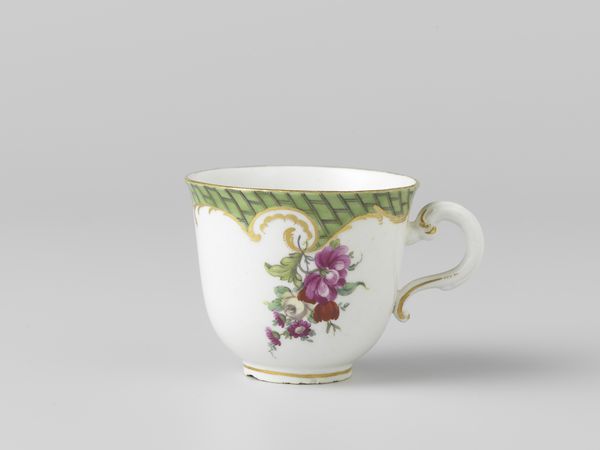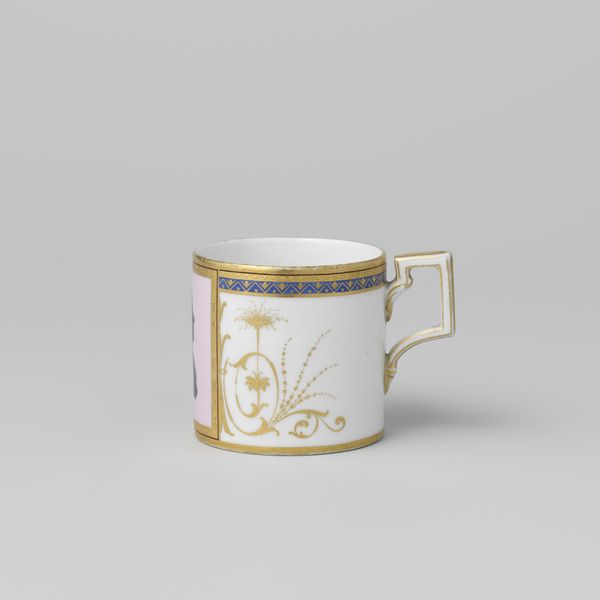
Kop, beschilderd met een zigzaglint, waaromheen een tak met bladeren slingert c. 1778 - 1782
0:00
0:00
loosdrecht
Rijksmuseum
Dimensions: height 6.3 cm, width 8.2 cm, diameter 6.5 cm
Copyright: Rijks Museum: Open Domain
This cup, decorated with a zigzag ribbon and trailing foliage, was crafted in Loosdrecht, Netherlands. The production of porcelain like this one was deeply embedded in the social hierarchies of the 18th century. Loosdrecht porcelain factories, like many across Europe, emerged under the patronage of wealthy elites. These individuals, often aristocrats, sought to emulate the luxurious lifestyles of royalty. The cup's delicate floral motifs and refined design speak to the tastes of a privileged class. The zigzag ribbon could be referencing high fashion trends. The craze for collecting fine porcelain became a symbol of status and cultural capital. These objects reflect an elite culture of consumption and display, reinforcing existing social norms through material possessions. Understanding the social context of porcelain production requires research into the history of European manufactories, patronage networks, and consumer culture. This can reveal how art objects both reflected and reinforced the power structures of their time.
Comments
No comments
Be the first to comment and join the conversation on the ultimate creative platform.
